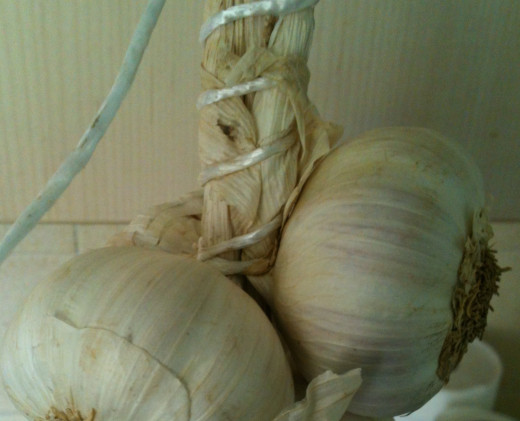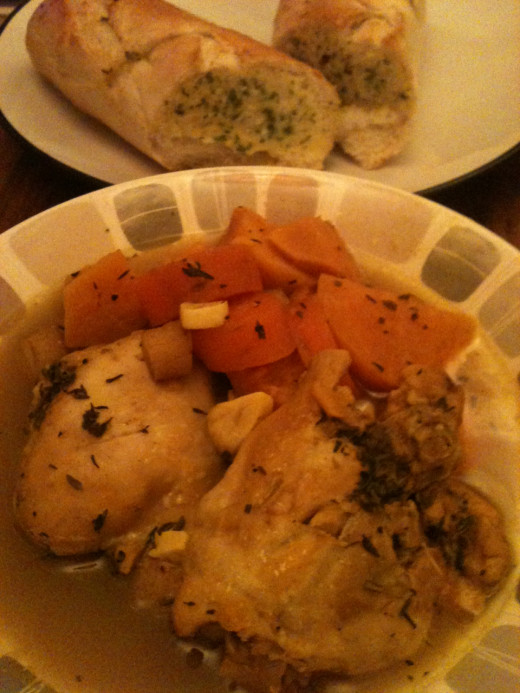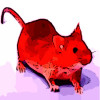Treatment for Cold and Flu Symptoms

Seasonal Ailments
In most cases, colds and flu are very short-term illnesses lasting a few days or a couple of weeks. For people who have no underlying conditions, there are rarely any complications, and to ensure a return to tip-top health as soon as possible, simple advice is the best - rest for a few days, drink plenty of fluids, take over-the-counter cold and flu medicines, and avoid alcohol.
If the symptoms become very bad, or you have any unusual symptoms, such as a rash or breathing difficulties, you may need to see a doctor.
There are also illnesses that seem like colds and flu - like pertussis (whooping cough) or sinusitis, both of which last much longer and have additional symptoms - and for which you probably will need to seek medical advice. Pertussis starts as a mild cold, and then develops into severe fits of coughing. Sinusitis is an infection of the sinuses that can last for months and which may need to be treated with antibiotics if it is caused by bacterial infection.
If any of your symptoms are severe or unusual, or if they persist after three or four weeks, speak to your doctor, or at the very least seek advice from your local pharmacist.

Prevention and Avoidance of Colds and Flu
Some people catch every bug that's doing the rounds, where the luckier ones seem to get away scot-free! If you are one of the former group, and seem to get a cough, cold, or sniffle every month or two, check that your diet is healthy - are you getting enough iron and vitamin C; are you getting plenty of fresh fruit and vegetables? And check your own lifestyle - are you partying a little too hard, burning the candle at both ends? Try to get a half-hour walk into your day, which will help boost your immune system and keep your circulation healthy. Cut out or cut back a little on unhealthy indulgences - sugary or fatty foods, alcohol and smoking.
Air out stuffy rooms - at home or in the office - by opening a window; wash your hands regularly with soap and warm water; cover your mouth when you sneeze or cough (and move away discreetly from anyone who doesn't!). We know these things so well that we sometimes forget to actually do them - but they really are important to stop the spread of infection, and to avoid the miseries of minor ailments.
Treating Cold and Flu Symptoms
Aches and pains, blocked nose, headaches, sore throat, coughs - all of these can be relieved temporarily by taking cold and flu medications from the pharmacy. But they should only be used for a short time - a few days when your symptoms are at their worst - and there are lots of other things you can do instead that will help. Below are some of the most tried-and-tested methods of managing the most annoying symptoms.
Breathing in Steam - Relieving that 'Stuffed Up' Feeling
Fill a large bowl with hot (but not too hot!) water, and create a 'steam tent' by leaning over the bowl and draping a towel over your head, and then breathe the steam in deeply. If you add a few drops of menthol or eucalyptus to the hot water, it will be more effective and help to calm inflammation and make breathing easier.
Having a hot shower will help in the same way, as the steam will help relieve congestion. A warm bath won't create enough steam to have much of a decongesting effect, but it will help relax aching muscles.
A Little Moderate Exercise
In the first couple of days of a cold or flu, when your muscles are sore and aching, and you perhaps have a raised temperature, exercise should be avoided and you should get plenty of rest - so put your feet up and relax as much as you can.
But when you start to feel the symptoms subside a little, a small amount of exercise may help you recover - a short walk will be enough, just to get your circulation going and make your lungs work a little harder.
Don't overdo it - and don't exercise if you feel any dizziness or pain - but one study showed that people recovering from minor seasonal ailments reported feeling better after some moderate exercise.

Foods That Might Help You Recover
Some foods have antiviral and antibacterial properties; others give your body the right nutrition to help it heal. None of them are 'magic', but they can help you get better a little more quickly and might help you to ward off minor illnesses in the future.
Garlic - Lots of people swear by it, and it has been shown in research to have antiviral and antibiotic properties, although it is still unclear whether it really can help get rid of or prevent infections. But since it has been used traditionally as a healing food for centuries, adding a few crushed or sliced cloves to a soup, stew or stir-fry may help you feel a little better.
Turmeric - There is a lot of very exciting research around this spice, and although it hasn't been shown to directly affect colds and flu, it has been shown to have a positive effect on health in many other areas, and to reduce inflammation, which is one of the major factors in colds and flu, and which causes some of the most unpleasant symptoms. So, like garlic, add some of this to soups, casseroles or stews. Just to note that turmeric is not absorbed well by the body, but its absorption is increased hugely by the addition of black pepper, so add a sprinkle of that, too.
Spicy Foods - from black pepper to chili, hot spices have been shown to reduce inflammation, relieve pain, and clear congestion - and you don't have to eat a burningly hot curry to enjoy the benefits; just adding a little to a meal to make it mildly spicy can help relieve some of those symptoms.
Chicken Soup - an old wives' tale that turned out to be right is that chicken soup can help clear up a cold. Home-made is best, and adding some garlic and spices will add to its healing properties, but if you feel too bad to start cooking, even shop-bought chicken soup or broth might help you get better more quickly.
Fruit and vegetables - vitamin A and vitamin C are necessary for the lungs to funtion well and for the body to heal itself, and fruit and veg contains lots of these nutrients and many more. Add root veggies like carrots, parsnips and sweet potatoes to casseroles, bell peppers to a stir-fry, and make yourself a fruit smoothie for breakfast with blueberries, strawberries, mango and apple juice - and add a spoonful of plain, natural 'live' yoghurt for an extra boost to your immune system.
Rosemary and Thyme - Rosemary boosts your immune system, and thyme has antibacterial effects. They both have quite mild but distinctive flavours, and the dried forms in jars available from many grocery stores are just as delicious and effective as the fresh herbs.

Flu-Be-Gone Stew
This is an easy-to-make stew that cooks in about three quarters of an hour, or a little longer depending on what kind of meat you add.
The Chicken Version - using chicken thighs will make this into a kind of quick home-made chicken soup, which has been shown to clear up seasonal ailments faster.
The Lamb Version - Lamb contains a lot of zinc, which is essential for your immune system, and which has been shown to shorten the duration of colds.
Both versions contain root vegetables, which have lots of the essential vitamins that the body needs to recuperate and heal itself from illnesses, and I add my favourite herbs and spices, and lots of garlic too - if you don't like the flavour of any of these add a little less, or substitute your own favourites.
The proportions here will make enough for two-three large bowls of stew, and once cooked, it can be stored in the fridge, covered, for up to three days.
Rate the Taste
Ingredients
- 200-300g Diced Lamb
- OR 4-6 Chicken Thighs, skinned and de-boned
- 1 medium carrot, sliced
- 1 medium parsnip, sliced
- 1 medium sweet potato, chopped
- 4-6 cloves garlic, crushed or sliced
- 1 teaspoon turmeric
- black pepper, freshly-ground or pre-ground jar
- rosemary, fresh or dried
- thyme, fresh or dried
Cook Time
Instructions
- Place the diced lamb or chicken thighs in a large pan - woks are best but any pan will do. Add the vegetables - peeled, washed and chopped.
- Mix the herbs and spices with around 400ml just-boiled water, and pour over the meat and vegetables.
- Cover the pan (if you're using a wok with no lid, place the largest pan lid you have over, to retain the liquid as much as possible - I use my large slow-cooker lid).
- Simmer on a low heat. If you use chicken thighs it will cook in three-quarters of an hour; diced lamb will take about an hour to an hour and a half - check the meat after an hour.
- Throughout cooking, check the liquid level frequently, and add more water as necessary.








